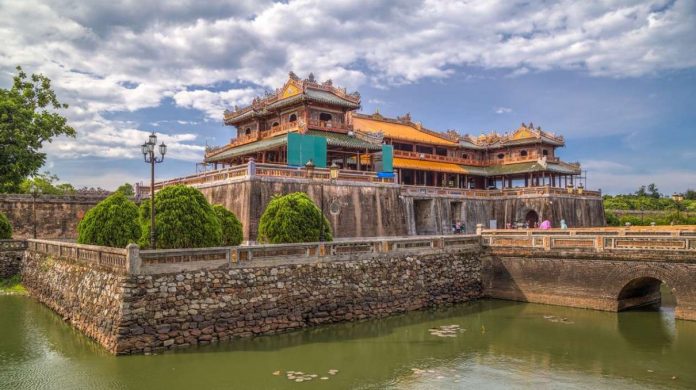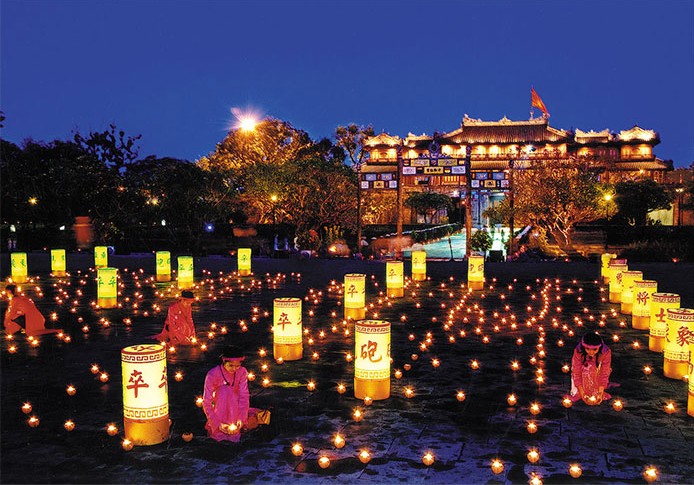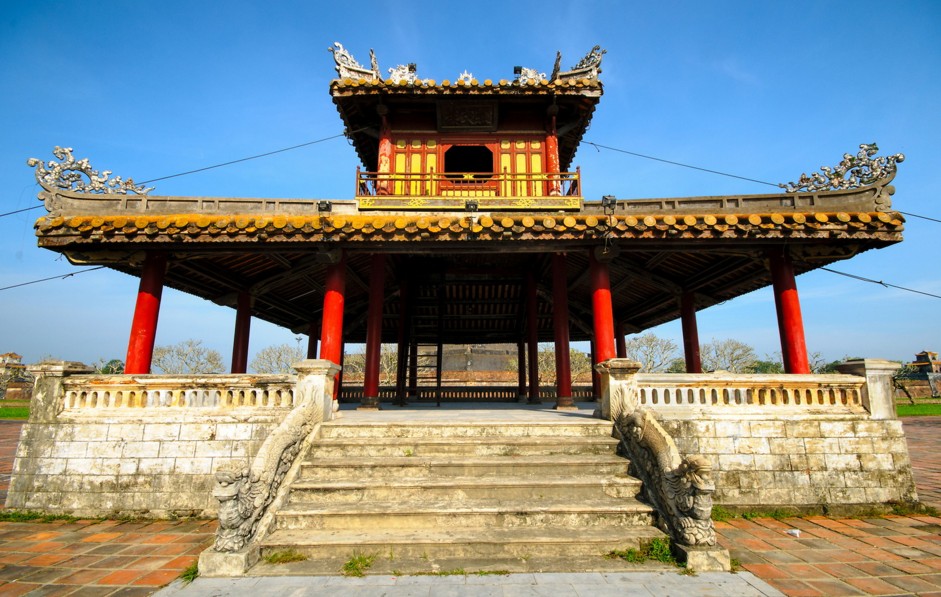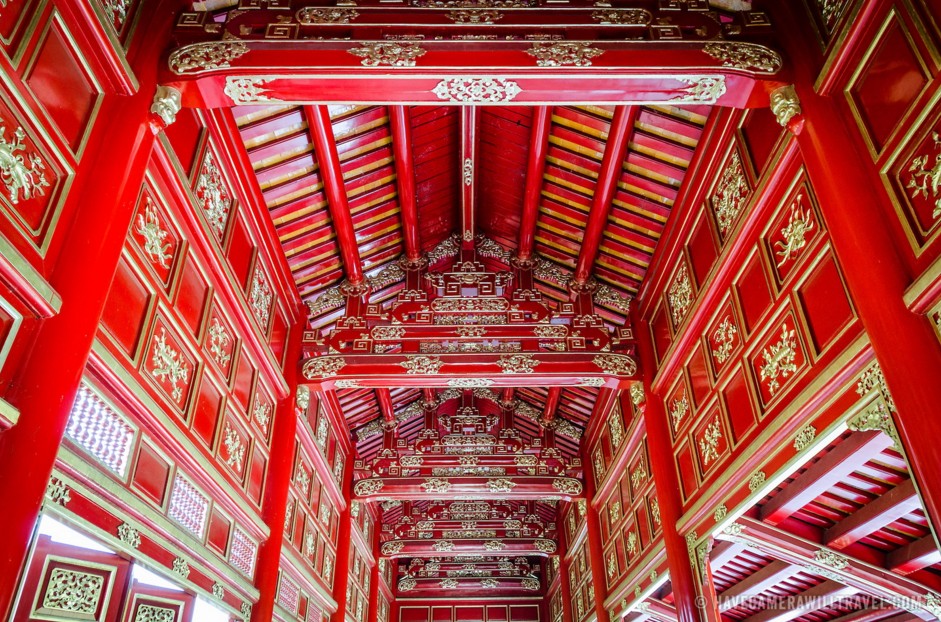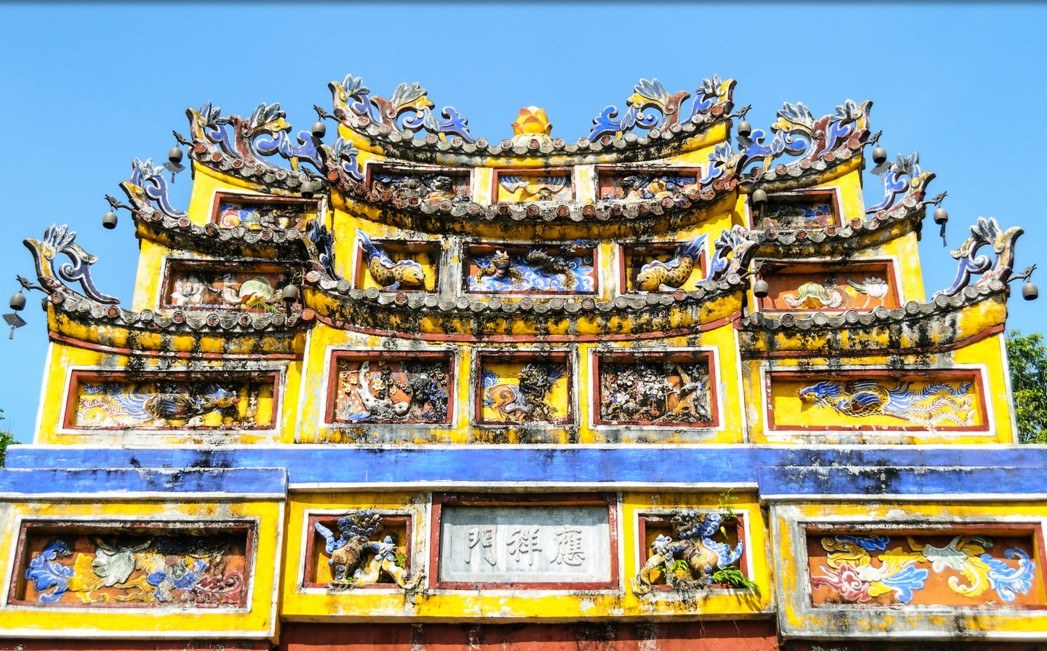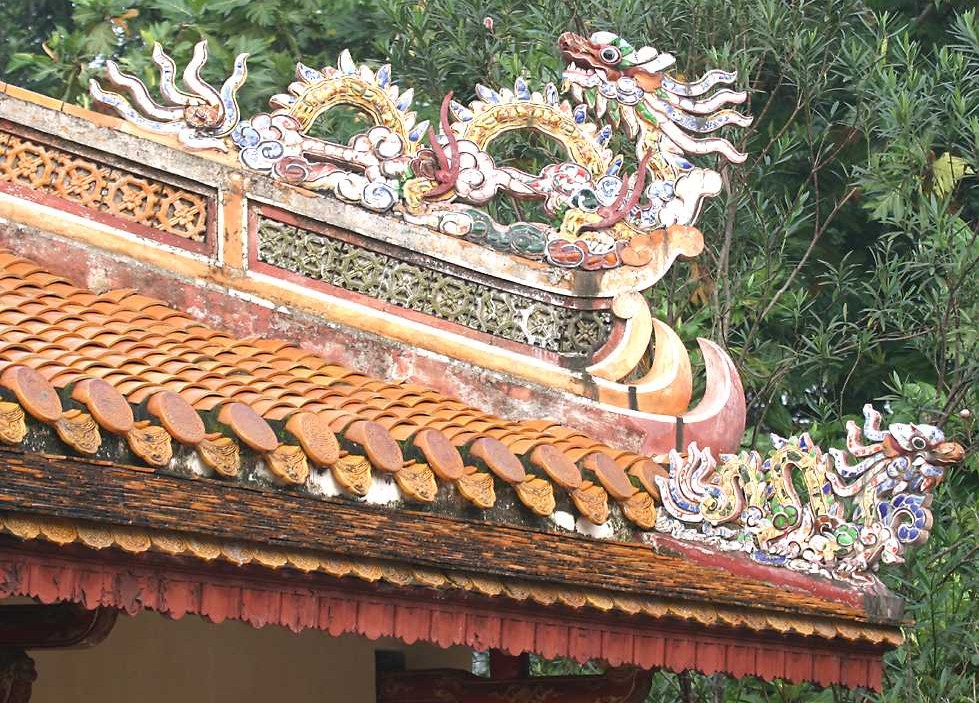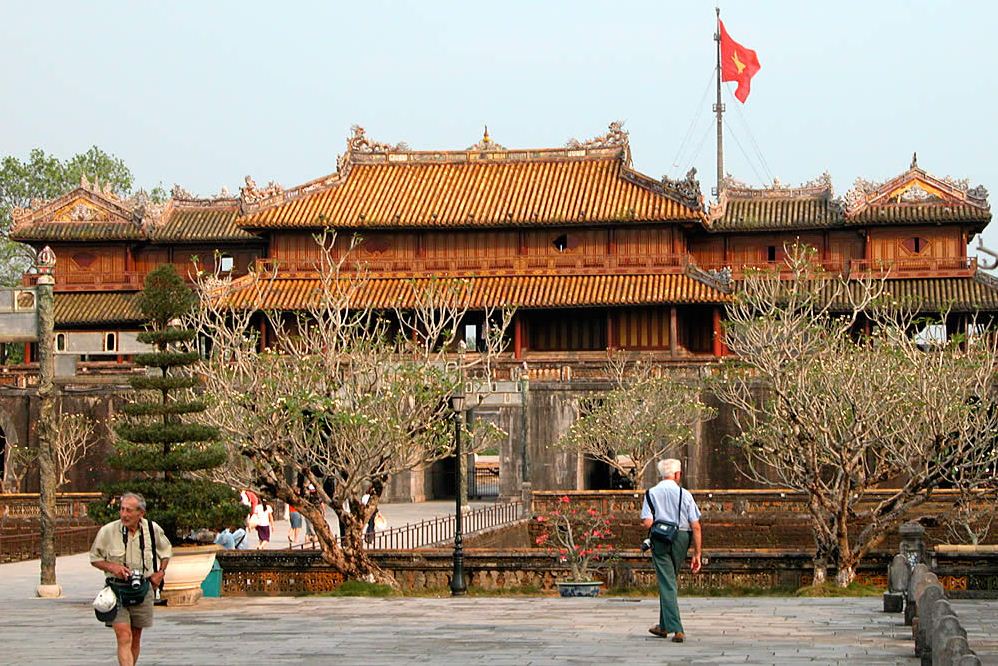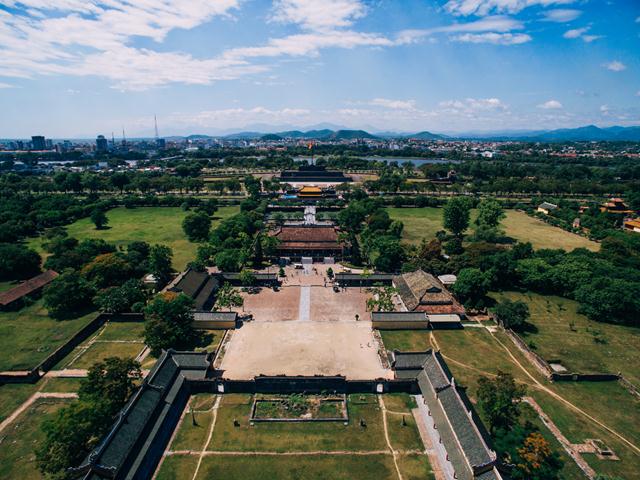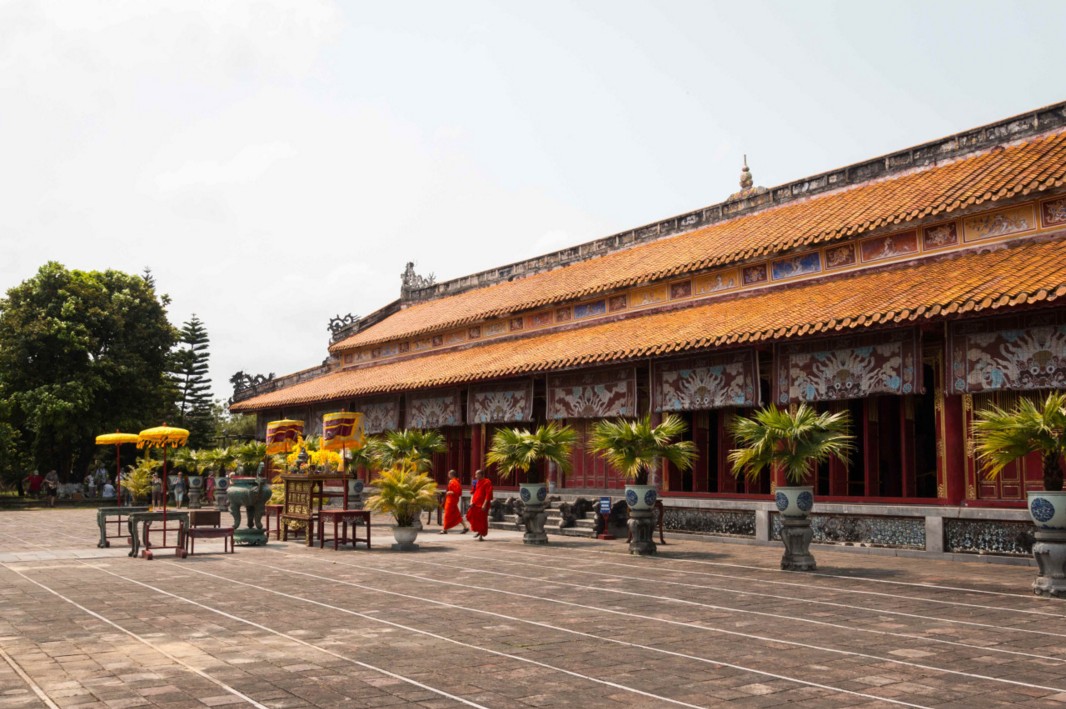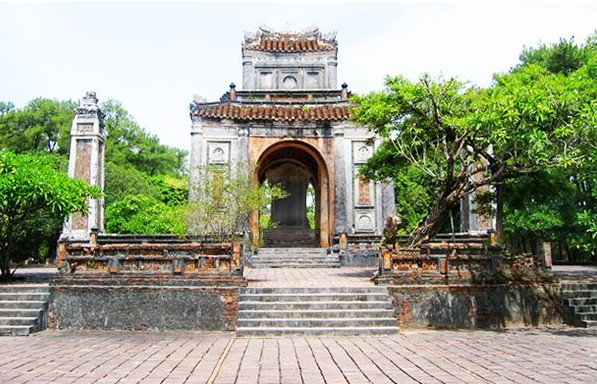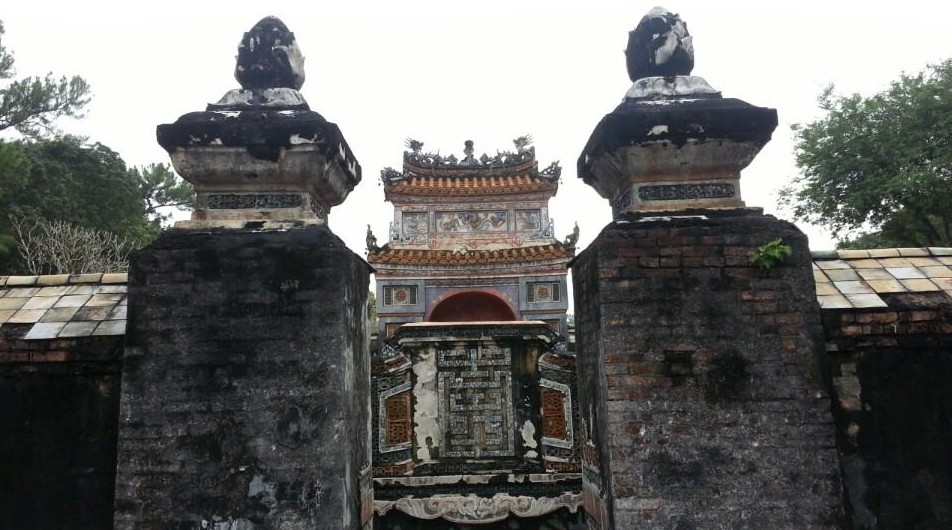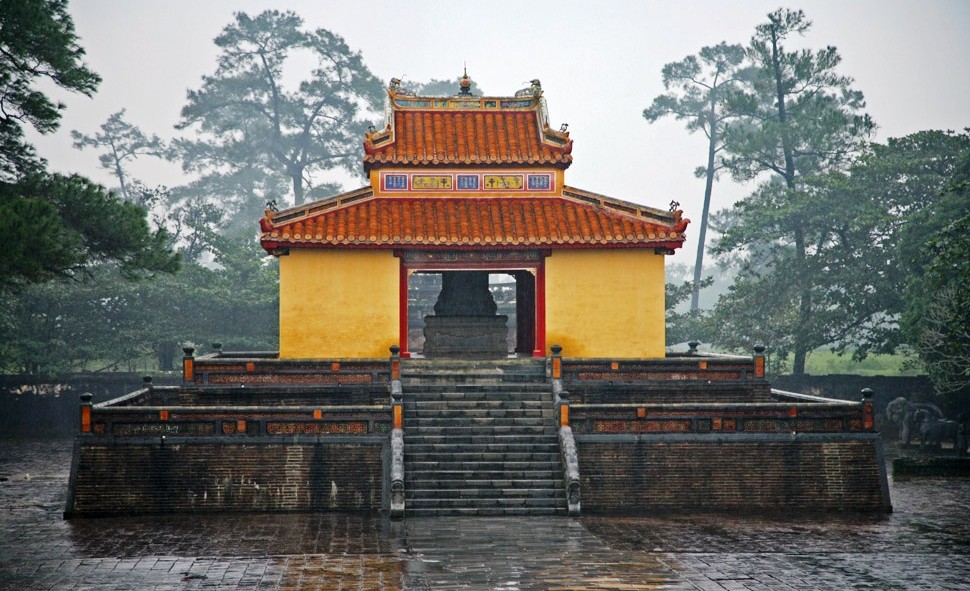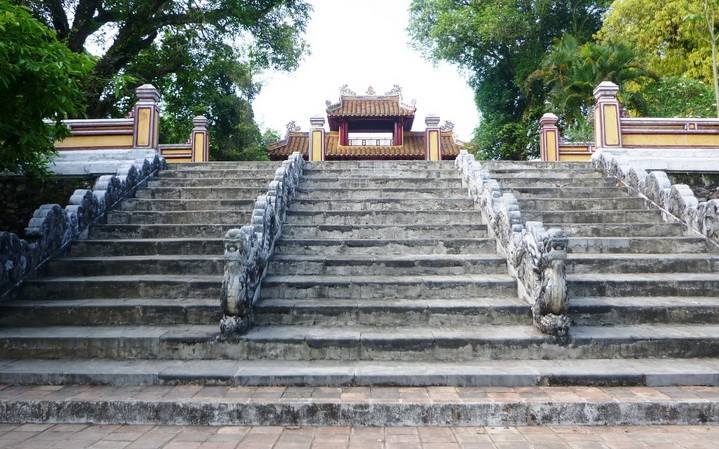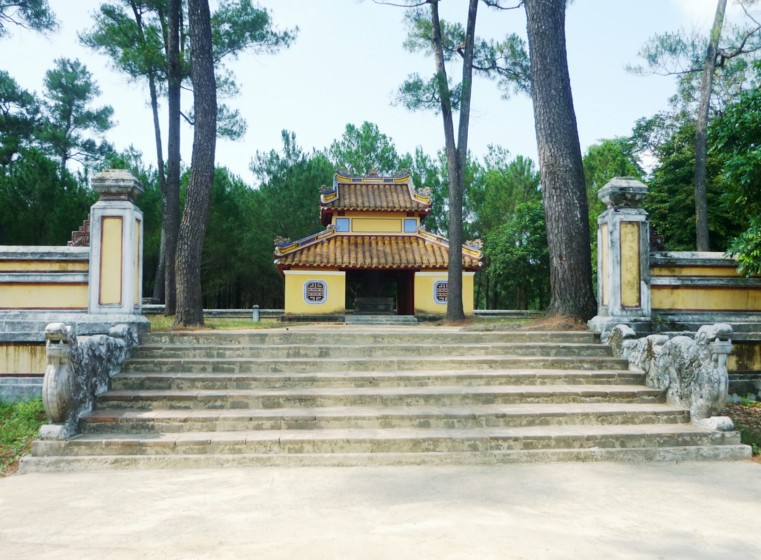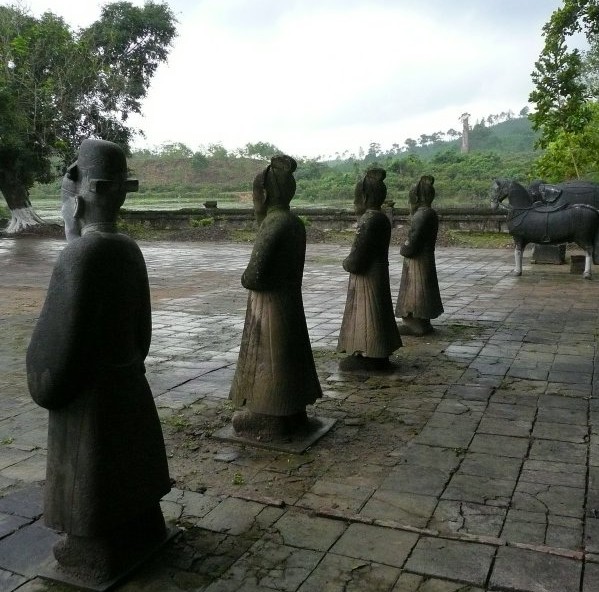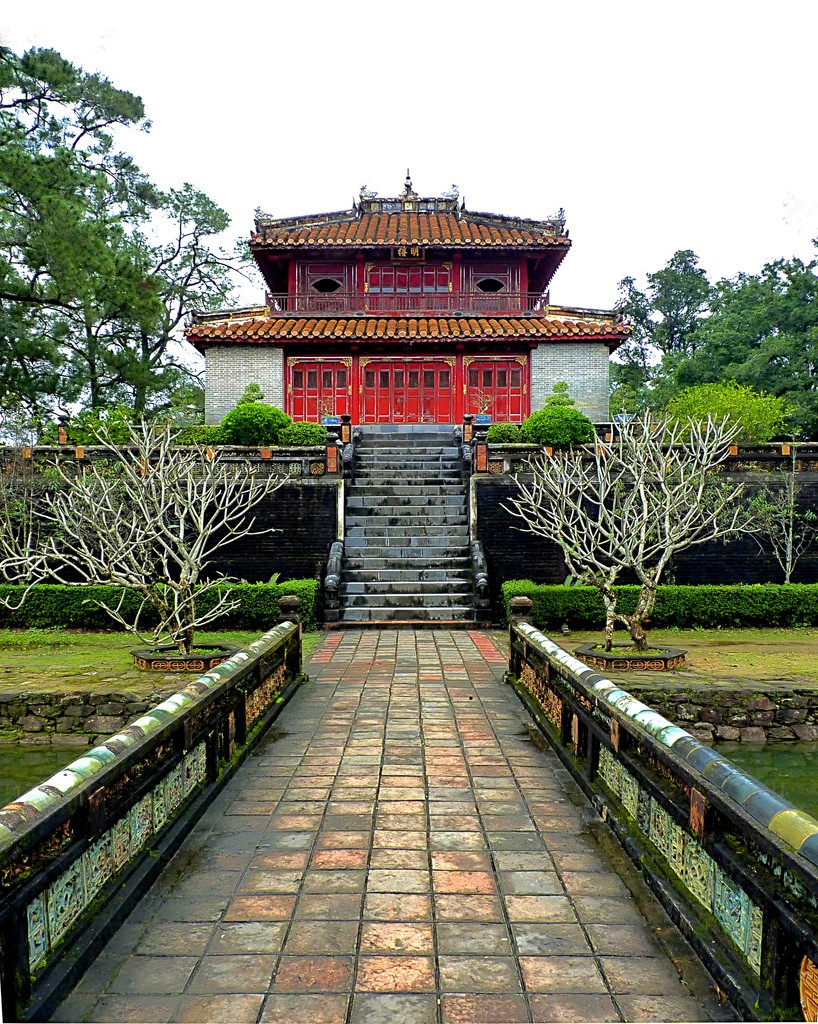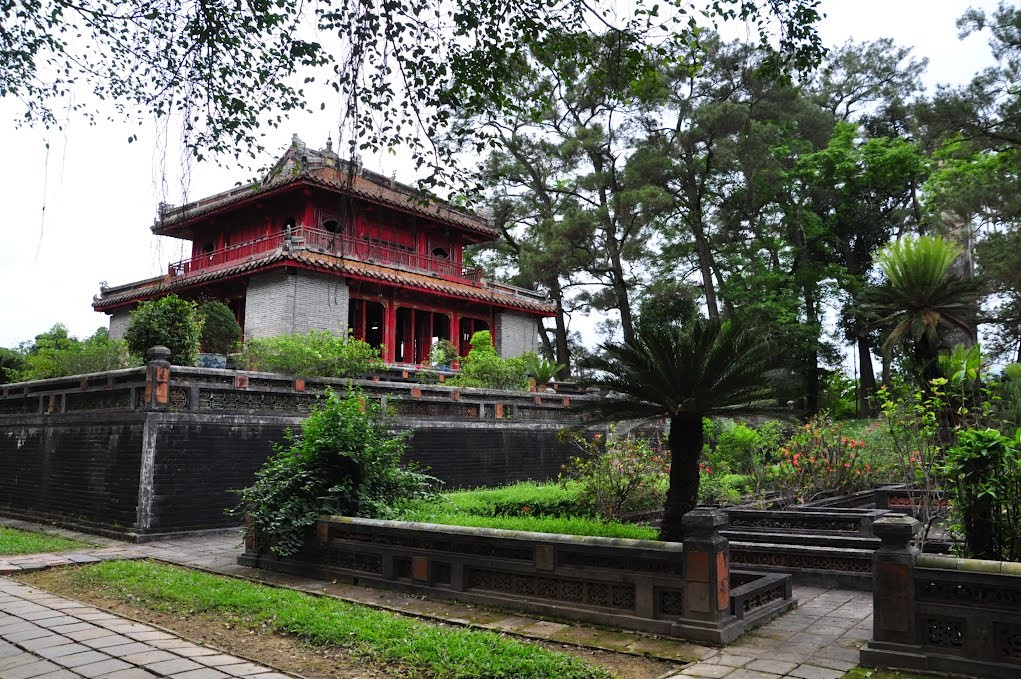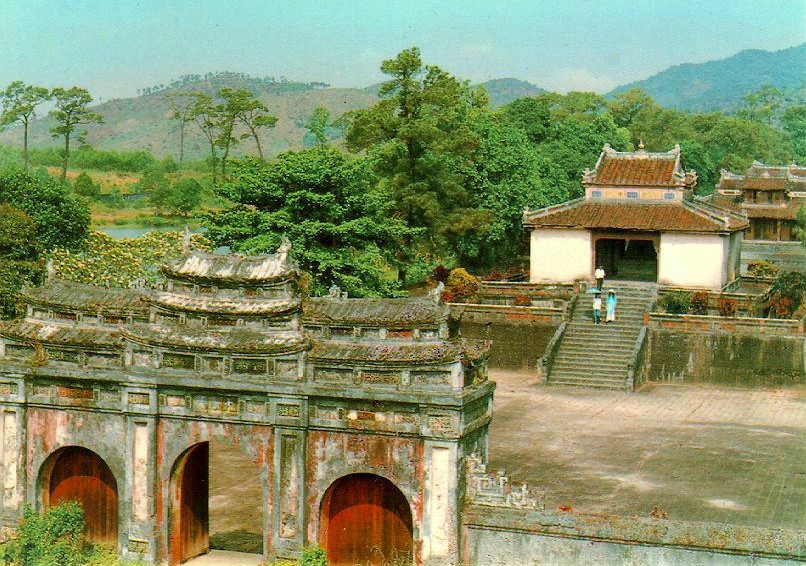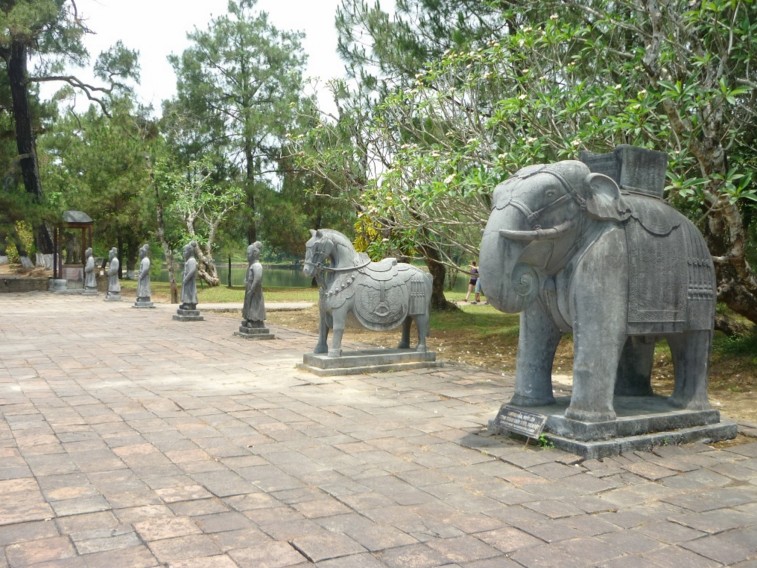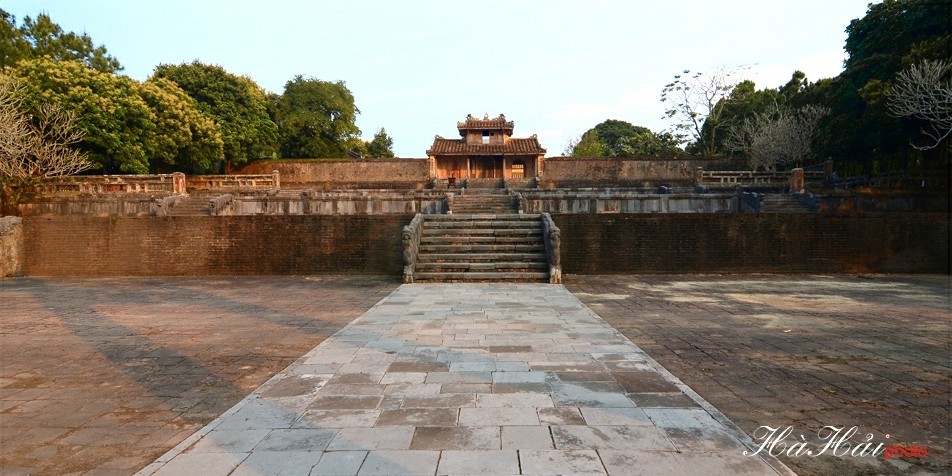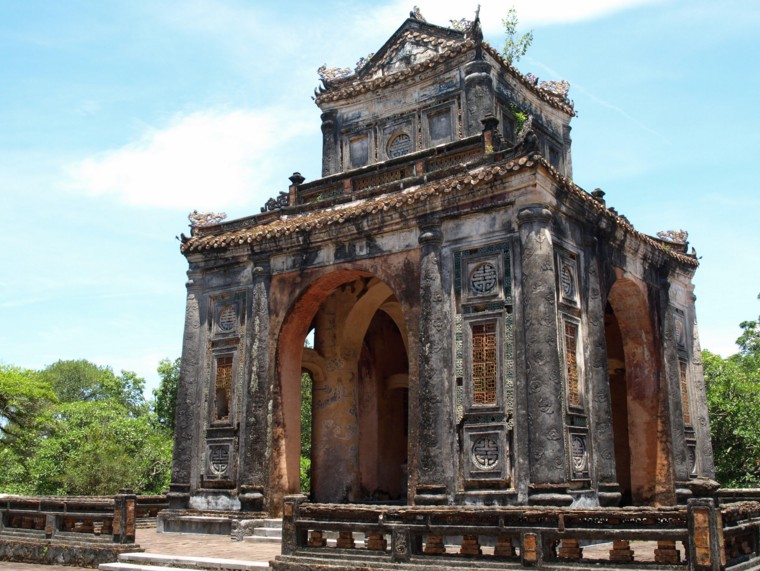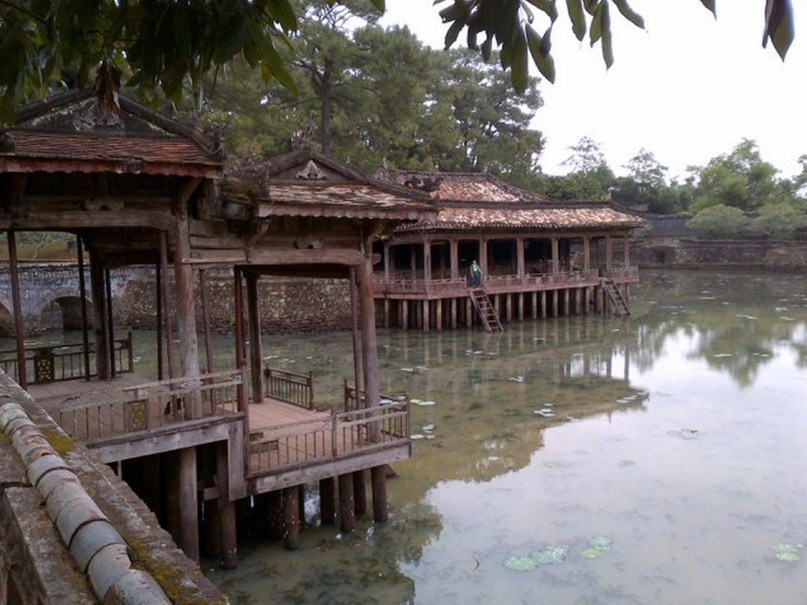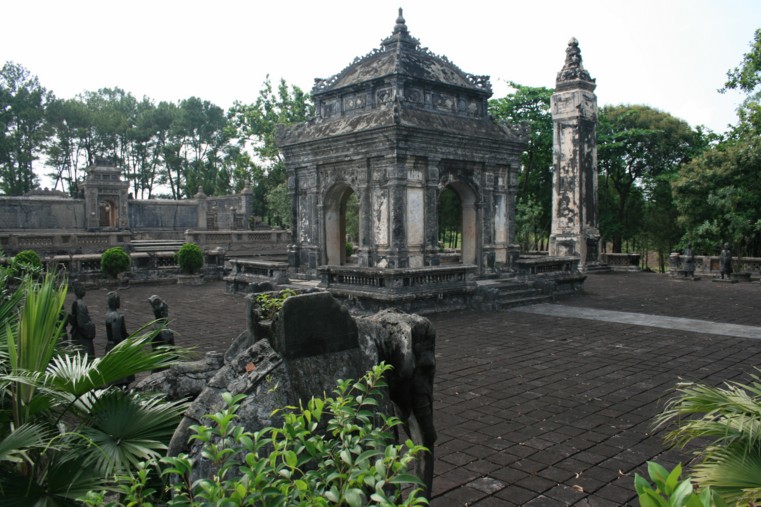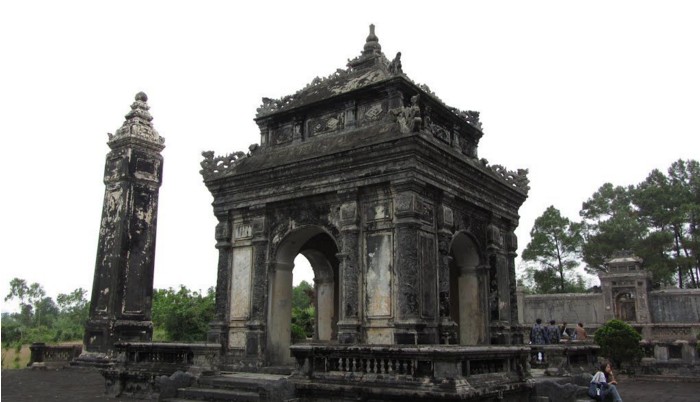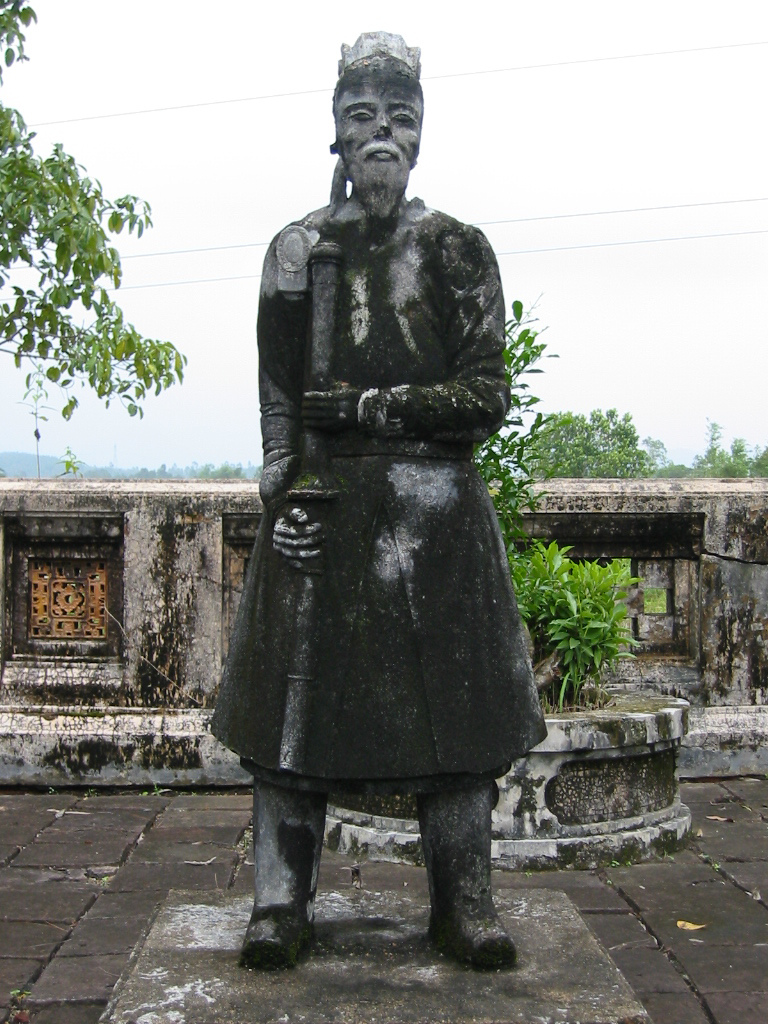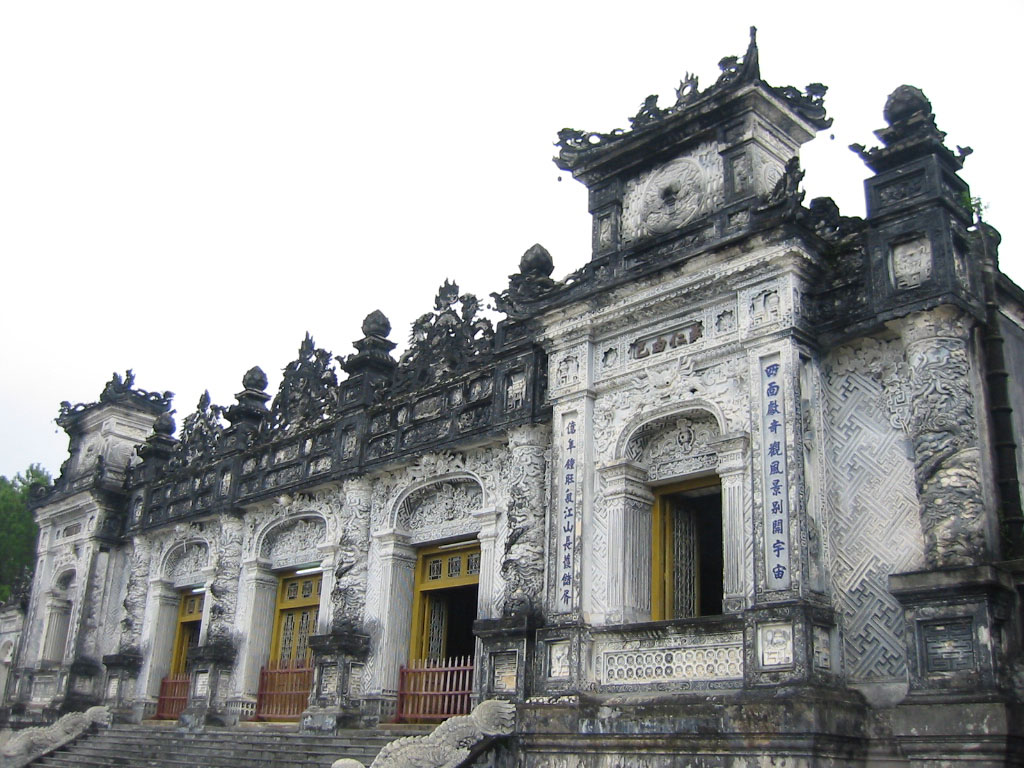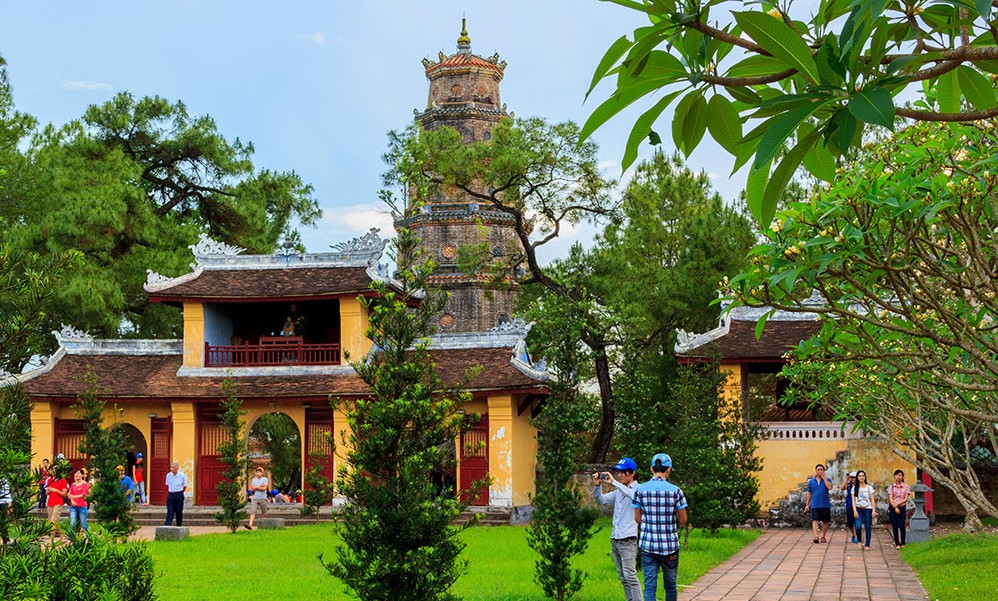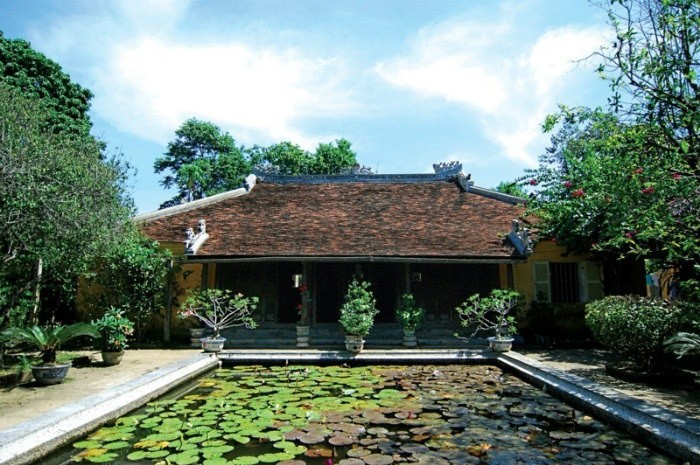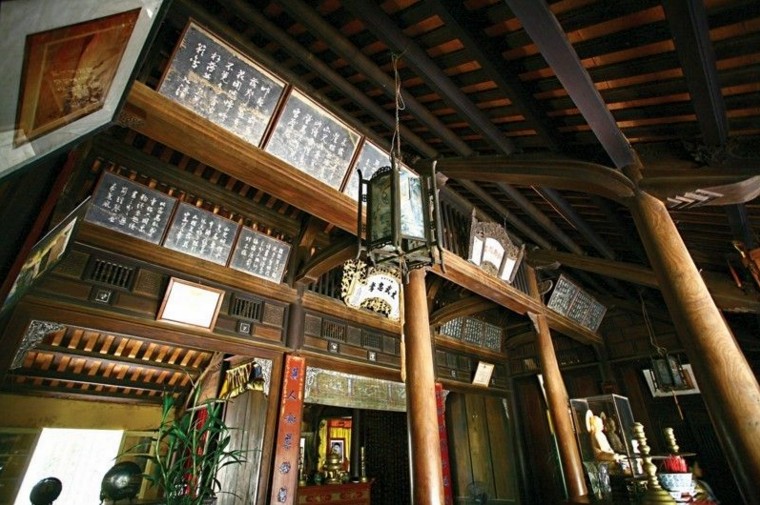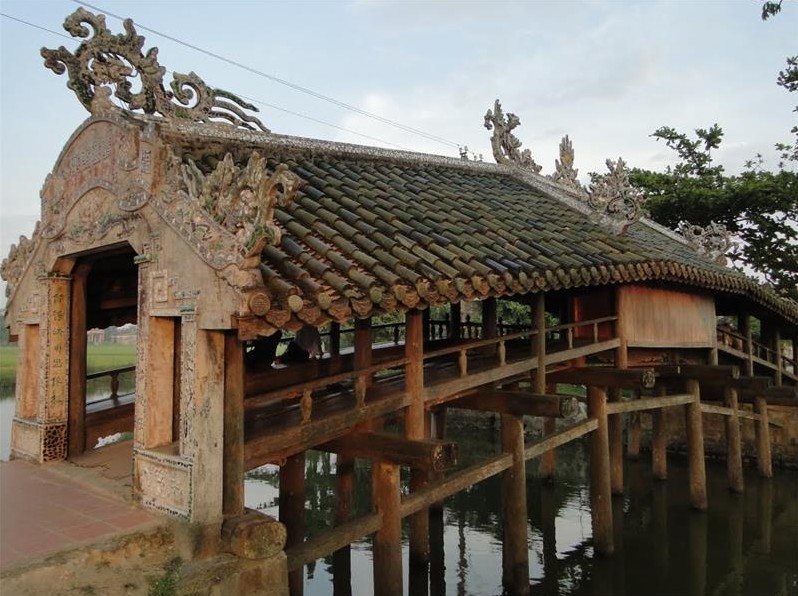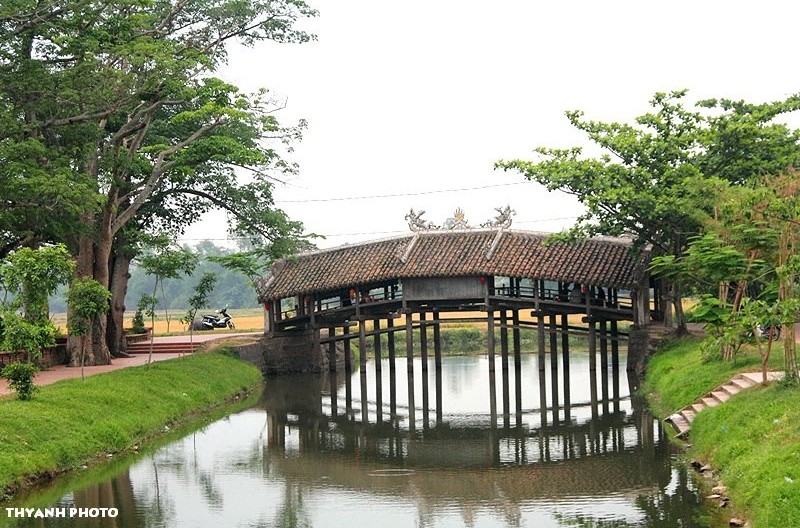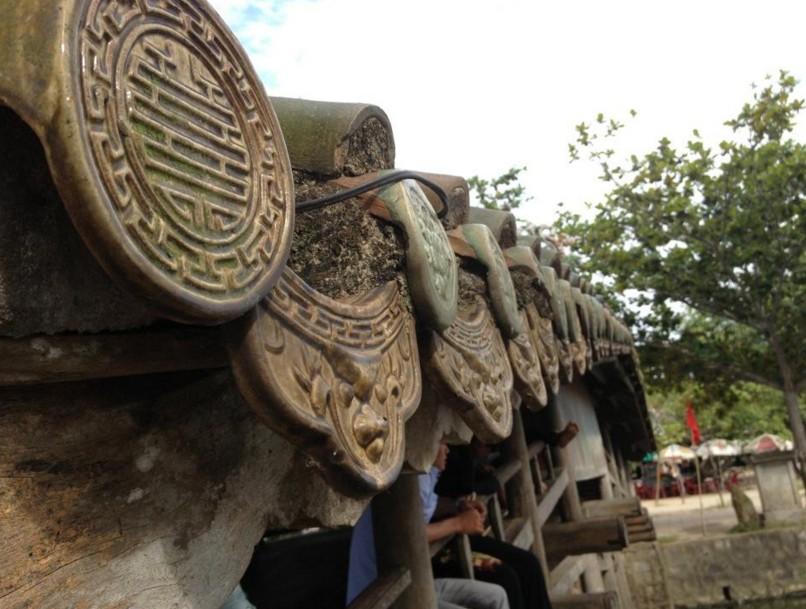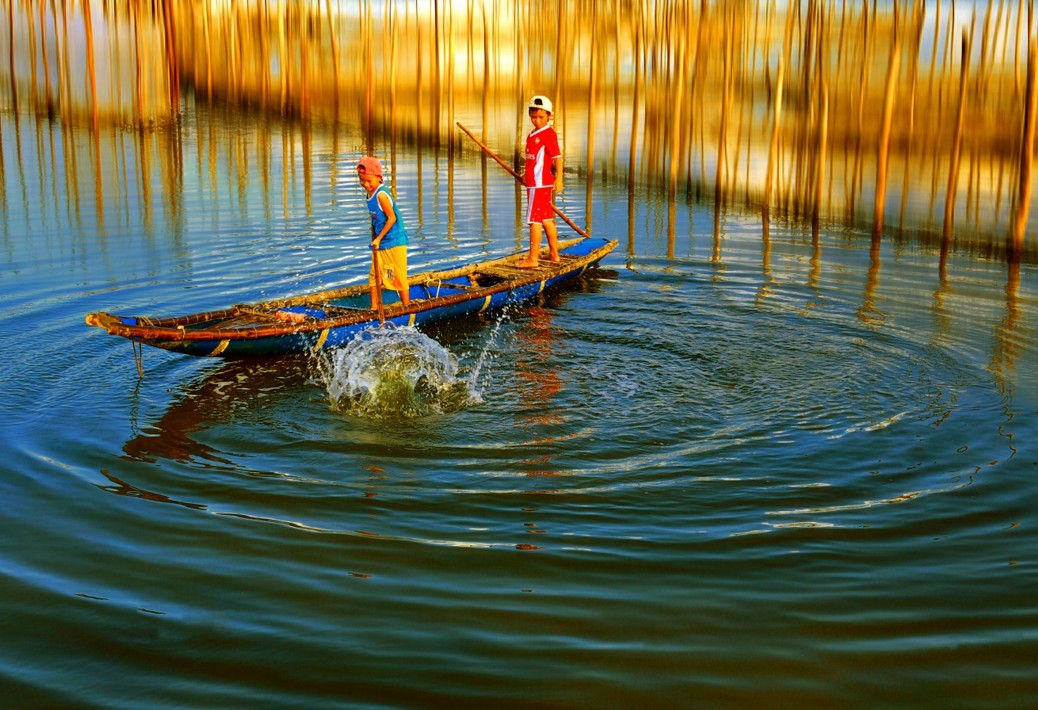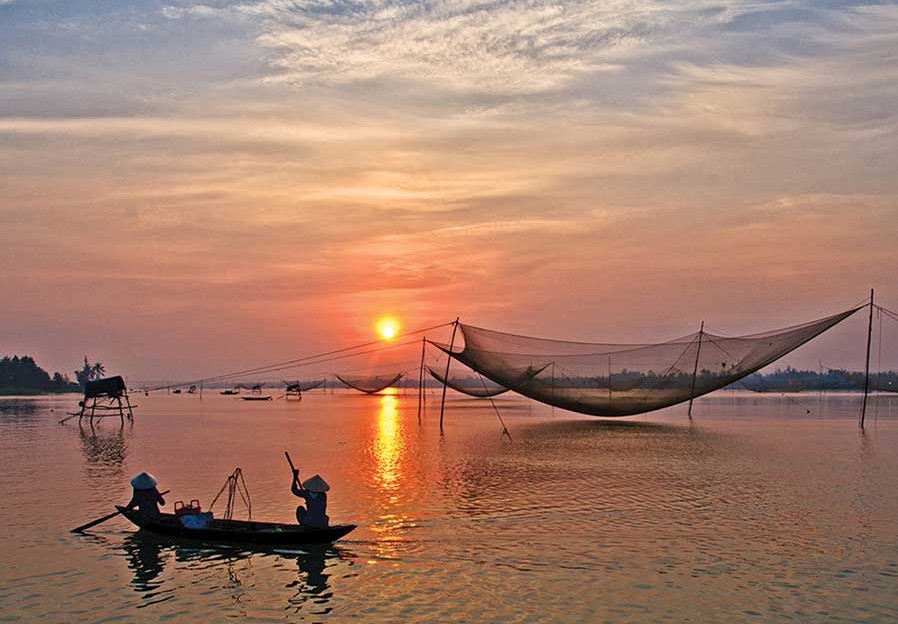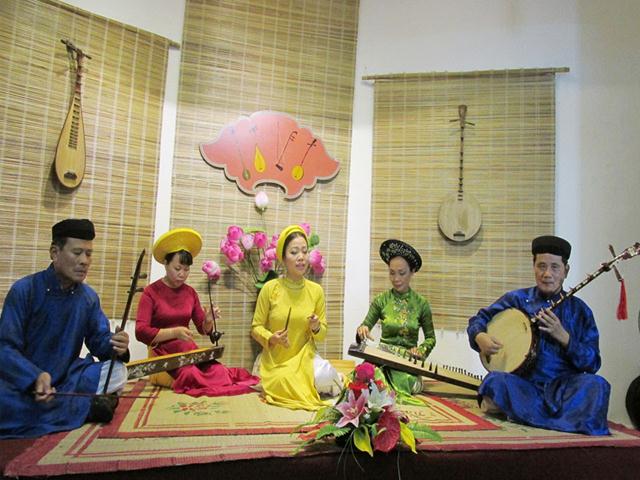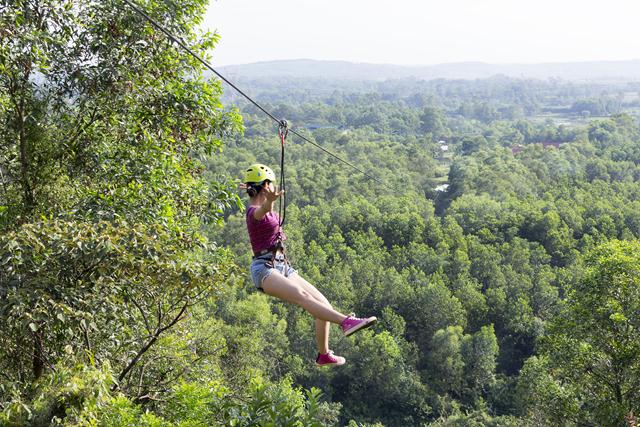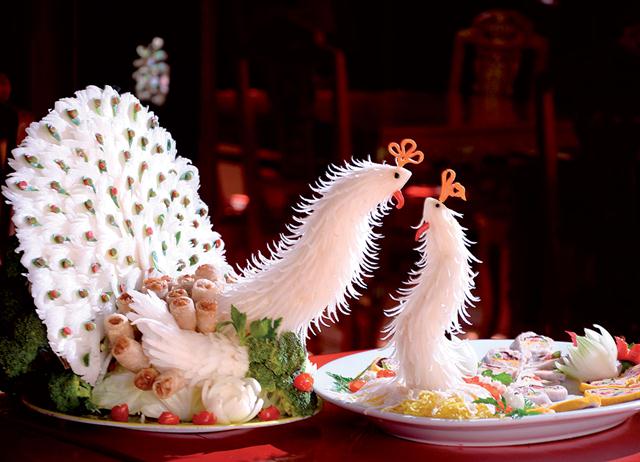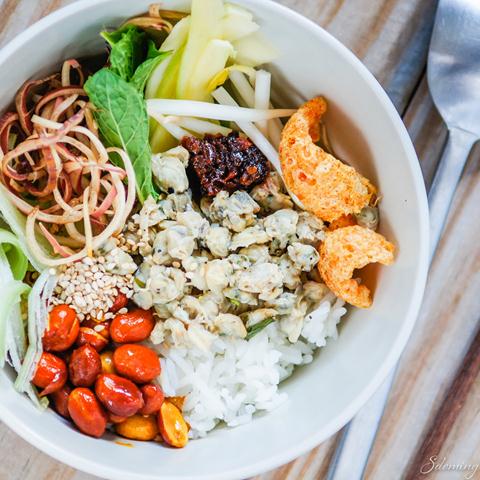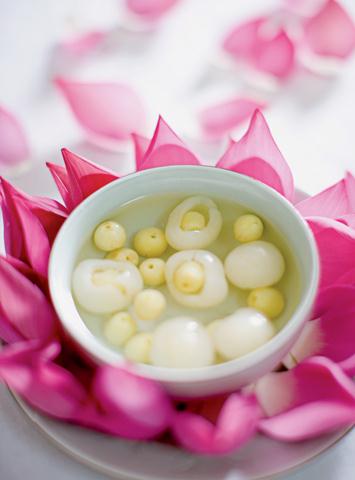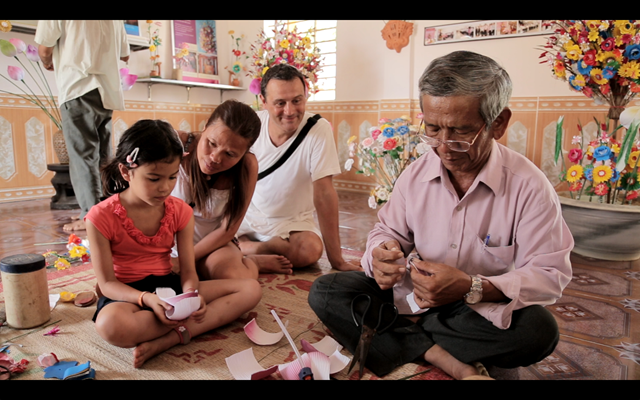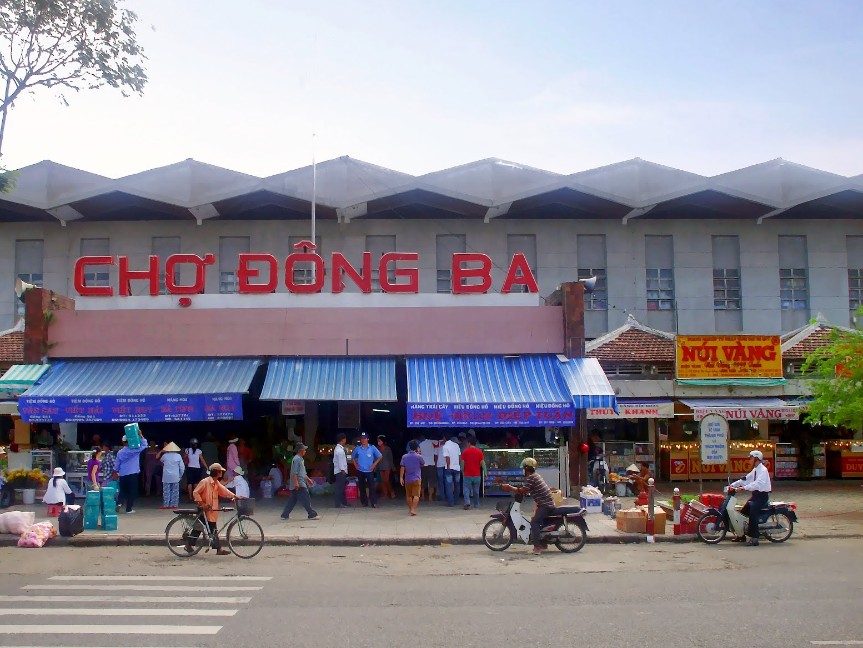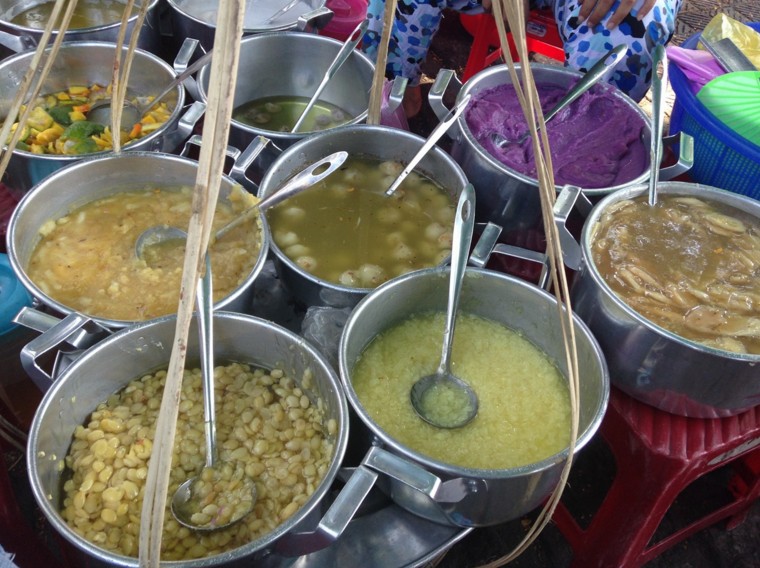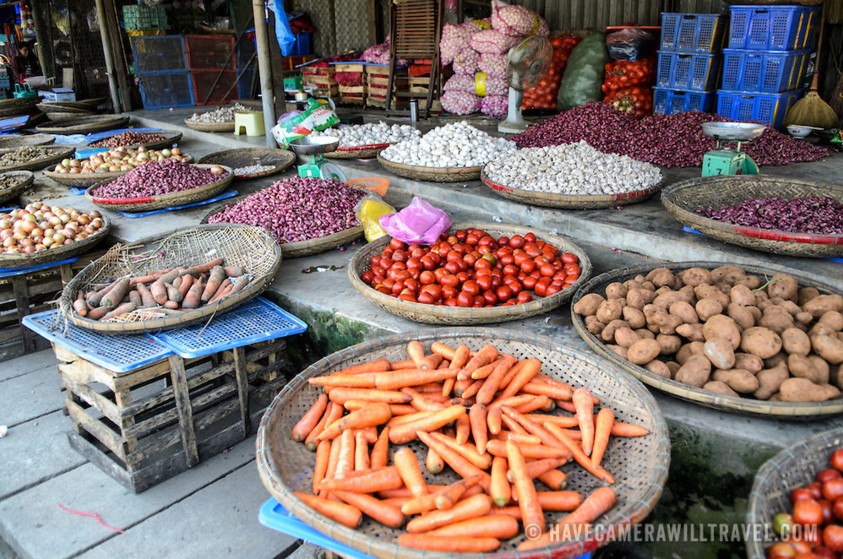Within the city of Hue is is a massive complex of citadels, temples, palaces, and tombs built during the Nguyen Dynasty. Hue’s poetic natural scenery combined with the beauty of the human and the culinary art have contributed to make Hue an attractive destination for domestic and foreign tourists alike, especially during the 9th Hue Festival at this end of April.
“Festival City”
Hue is one of the few “festival cities” in Vietnam. The city is a great place for traditional Vietnamese festivals and as well as an array of tourist activities that juxtapose Eastern and Western culture. Unlike other cities in Vietnam, which have altered considerably with the ups and downs of history, Hue has preserved the perennial beauty of its architectural and culture treasures. This heritage city also boasts 127km of coastline with beautiful beaches – which promises to help develop the city’s beach tourism. The spectacular Lang Co Bay, Bach Ma National Park, and Tam Giang Lagoon – the largest lagoon system in Vietnam–are must-visit destinations.
After the complex of Hue monuments was recognized by UNESCO as a World Cultural Heritage Site in 1993, Thua Thien – Hue Province has put forth extensive effort to conserve and promote the value of monuments while attracting more visitors and focusing on sustainable development. In 2016, Thua Thien – Hue plans to enhance tourist services, heritage tourism, beach and lagoon tourism and also intends to hold more cultural and artistic events. In addition to the old routes between Hue and Bangkok or Hue and Dalat, new flight routes will make it more convenient for visitors to travel to Hue.
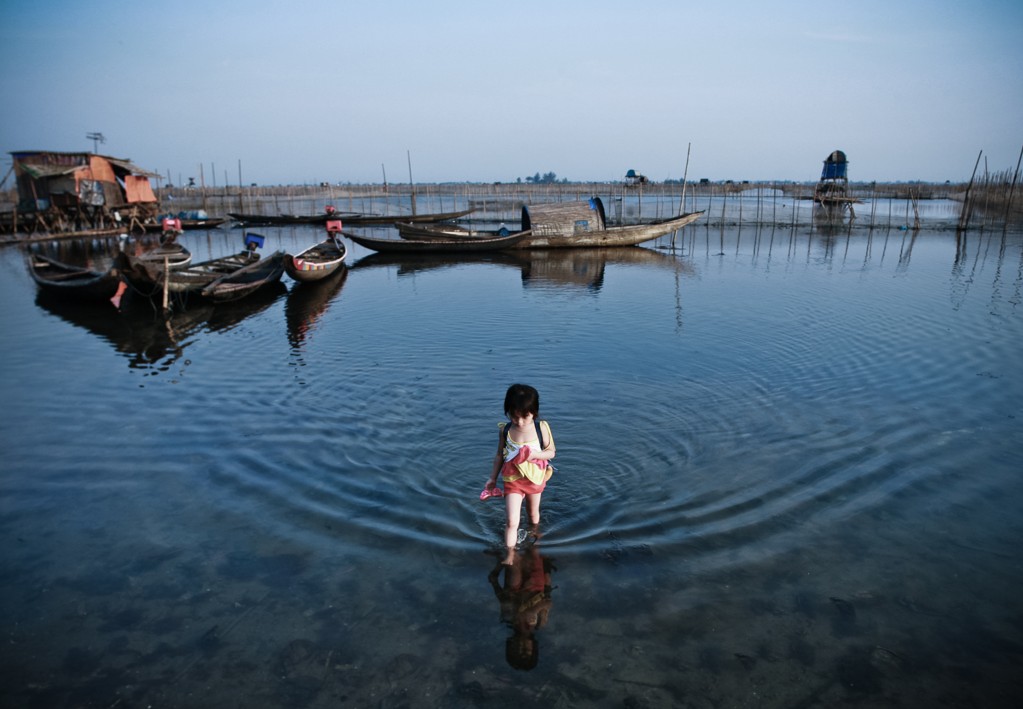
Must-visit destinations in Hue
Royal architecture
Hue royal architecture has long become one of the architectural ensemble of extremely unique in Vietnam. Let’s learn the characteristics of landscape design very special and interesting architecture of the Imperial court:
Architectural edifice, the Imperial court is characterized by not sticking up that spread horizontally. The layered architecture integrated into nature, hidden in green, velvety grass, blue water.
Up to now, many of the mysteries of Hue’s citadels, temples, palaces, shrines, and pagodas haven’t been disclosed.
The citadel of Hue
Constructed under Emperors Gia Long and Minh Mang on the North bank of Huong River overlooking the south, Kinh Thanh Hue (Hue Citadel) uniquely combines western architecture with an oriental rampart structure. After almost 2 centuries, the Citadel’s 140 structures remain almost exactly like the original.
Hue Imperial Citadel. Image by Le The Thang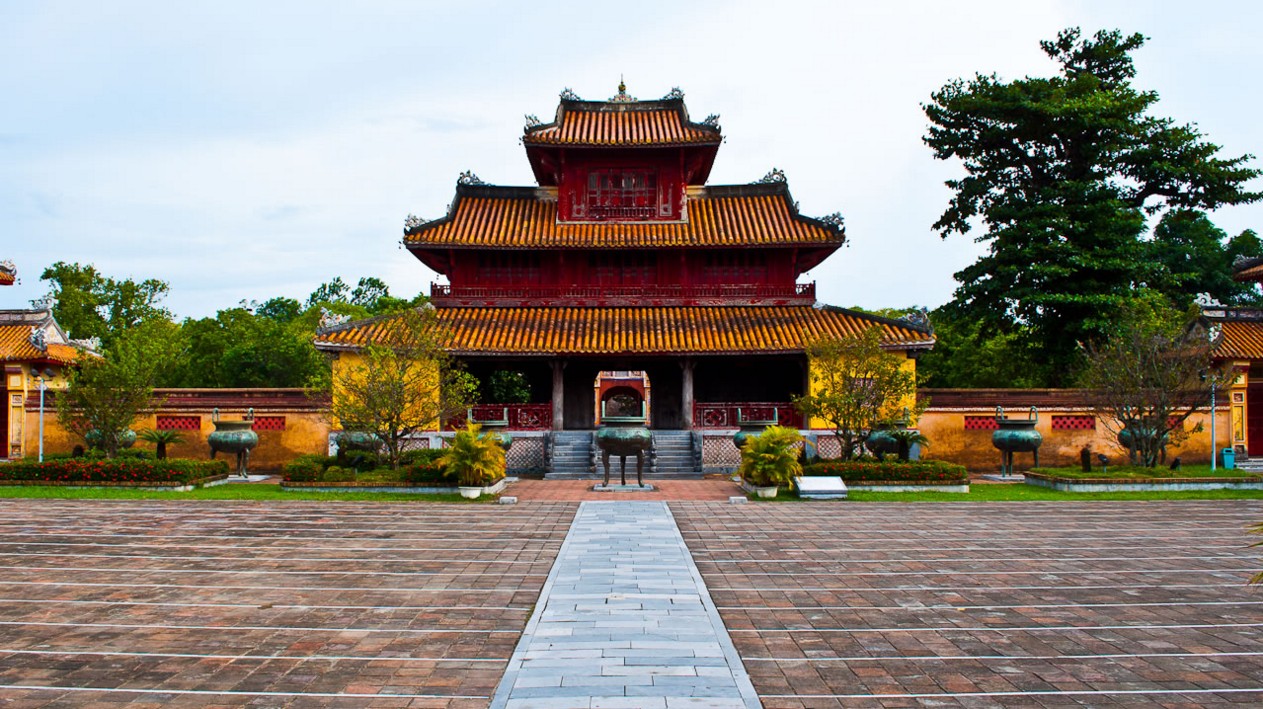
To visit the inner relics, you need circle about to cross though the three layers of ramparts: Kinh Thanh (Hue Capital Citadel), Hoang Thanh (Royal Citadel) and Tu Cam Thanh (Forbidden Citadel). The Royal Citadel consists of more than 100 fascinating architectural works divided into numerous subsections. The Ngo Mon Gate and the Thai Hoa Palace were used for various grand ceremonies. Trieu Mieu, Thai Mieu, Hung Mieu, The Mieu, and Phung Tien temples are dedicated to the shrines of kings from the Nguyen Dynasty. The portion with the internal affairs office includes a storehouse for precious items and a workshop for manufacturing various useful articles. The Kham Van Palace and Co Ha Garden are where princes used to study and relax. Passing through the Royal Citadel, visitors can enter Tu Cam Thanh (the Forbidden Citadel) which is just past Thai Hoa Palace. Including about 50 structures of stunning beauty, this was the place for kings and their family.

The Hue Museum of Royal Antiques is a must-visit place that no visitor travelling to Hue should skip. It is a gallery of antiques displaying hundreds of rare antiques from the Nguyen Dynasty such as the commissioned Porcelain used in daily royal meals and parties, silverware, Bronze Artifacts, Phap Lam enamel, wooden furniture, and royal ornamentation of silver and gold, and painted glass. More than a museum, the Hue Museum of Royal Antiques helps visitors imagine what royal life was like during the Nguyen Dynasty.
Further information:
- Directions: from Nguyen Hoang bus station, you can walk or travel by a Nguyen Hoang electric car to the Royal Citadel, pass Ngo Mon Gate and start exploring Royal Citadel and Tu Cam Thanh (Forbidden Citadel). Then, walk about 50m through Hien Nhon Gate to the Museum. Go back 100m to Nguyen Hoang Station to end your visit.
- Entrance ticket’s price (Royal Citadel and Hue Museum of Royal Antiques): VND150,000/adult and VND30,000/child.
The royal tombs – the ancient architectural masterpieces
The Royal Tombs are situated just outside the city in beautiful countryside amongst hills, lakes and pine forests are the Tombs of several of the Nguyen Emperors. Although there were 13 such rulers between 1802 and 1945 only 7 of them were honoured with their own mausoleums (the other 6 Emperors died in exile or in disgrace). The Royal Tombs are open daily between 0700 and 1700 – entrance tickets are quite expensive at 55000 Dong per person per Tomb.. All the tombs consist of three elements – a temple dedicated to the worship of the Emperor and his Queen, a large stone stele which recorded details of his life and reign and the Royal Tomb which is located at the highest point in the complex. The organised tour do usually give a reasonable amount of time at each of the tombs however particularly with Minh Mang and Tu Duc’s tombs even more time would have been nice for more wandering around.
The royal tombs of the Nguyen Dynasty are important parts of the complex of Hue monuments. The Nguyen Dynasty had 13 kings; however, because of historical context, there are only 7 tombs intact today, the tombs of Emperor Gia Long (1814), Emperor Minh Mang (1840), Emperor Thieu Tri (1847), Emperor Tu Duc (1864), Emperor Dong Khanh (1888), Emperor Duc Duc (1889), and Emperor Khai Dinh (1920).
The most architecturally sophistocated of these royal tombs are those of Emperor Minh Mang, Emperor Tu Duc, and Emperor Khai Dinh. Tu Duc Tomb contains beautiful gardens and landscaping, conveying a sense of tranquility. Within the tomb is Minh Khiem Duong, the oldest theater in Vietnam, which used to entertain Emperor Tu Duc. It’s also the only theater built inside a royal tomb, contributing to its distinctive cultural interest compared to the other royal tombs of Nguyen Dynasty.
When visiting Hue, Amadou Mahtar M’bow, the former General Director of UNESCO, expressed that “Each of these tombs is a perfect example, after its own fashion, of an architecture attuned to the landscape. The tomb of Gia Long, set amidst a vast natural park, gives an impression of strength and serenity, that of Minh Mang is invested with great solemnity, while that of Tu Duc induces a mood of quiet reverie.”
Tomb of Emperor Gia Long
Gia Long’s tomb is the least visited, the furthest from Hue, the most difficult to get to, but arguably the most significant. The founder of the Nguyen dynasty, his tomb was the template for those that followed. The site is neglected and overgrown. However, the damage it received during the war is not the main reason for its neglect – Gia Long was a cruel tyrant who allied himself with the French and remains a hated figure in Vietnamese history. Nevertheless, it’s worth the trip to visit the tomb if only to enjoy the atmospheric atmosphere and its classic design.
Tomb of Emperor Minh Mang
The most majestic is that of Emperor Minh Mang, a staunch follower of Confucianism with many wives, concubines and a small army of children. Planned by the Emperor and built shortly after his death, it is opulent and exotic, and laid out in formal Chinese style.
With the possible exception of Khai Dinh’s monument, no other tomb approaches the level of unity of the elements of Minh Mang’s tomb. Its layout and symmetry draws the eye naturally towards the main features, and the architectural balance blends the elements into a pleasing whole.
Tomb of Emperor Thieu Tri
Uniquely, Thieu Tri’s tomb was built by his son, Tu Duc, according to his father’s design. As his reign was comparatively brief and the work did not commence until some time after his accession, his tomb was not completed when he died. Consequently, his body was temporarily interred in the Long An temple, within the outer area of the Citadel and now the home of the Museum of Antiquities. Thieu Tri’s design for his tomb was influenced by that of his father, Ming Mang, but his instruction to his son was to make it ‘convenient and economical’. Although it lacks the flamboyance of his father’s tomb, it is well designed with several distinctive features including a covered bridge similar to that in Hoi An.
Tomb of Emperor Tu Duc
The tomb of Tu Duc, the ‘poet Emperor’, is set in an elegant garden with a magnificent lake and pavilion complex. The centrepiece of the tomb is simplicity itself despite the lavish opulence of his reign (it’s really just a monument – he was buried elsewhere to thwart grave robbers).
Despite his cultural pursuits and desire to achieve a humble lifestyle, it was under Tu Duc that the Nguyen court reached its zenith of lavish opulence. Tu Duc withdrew into court life, seemingly indifferent to the people he ruled, and the brutal treatment of the three thousand artisans and workers pressed into service to build his tomb.
Tomb of Emperor Dong Khanh
The tomb of Emperor Dong Khanh is the smallest, but the most individual. He was another adopted son of Tu Duc who usurped the throne shortly after the French gained control of Hue. He ruled as a puppet Emperor protected by the French, but died after three years at the age of 24.
His successor, Thanh Thai, lacking funds, converted the temple that Dong Khanh has built to worship his father into his tomb. It marks an interesting turning point in the evolution of Vietnam’s architecture as it was built at a time when European culture was entering Vietnam. The interaction between oriental and occidental styles can be seen in the use of stained glass, terra-cotta relief and French artworks among traditional Chinese and Vietnamese features.
Later, this development would be taken to an extreme in the uneasy fusion of these disparate elements in Emperor Khai Dinh’s bizarre concrete edifice.
Tomb of Emperor Khai Dinh
In complete contrast to Emperor Tu Duc’s stylish creation, the tomb of Emperor Khai Dinh is appears at first to be an unprepossessing concrete construction. Its interest lies within in an uneasy combination of Vietnamese and European features and the use of fragments of ceramics and glass for decoration.
Nevertheless, Khai Dinh’s tomb is of great interest as an architectural watershed, the cusp between the influences of a Chinese past and a Western oriented future. The lavish embellishments inside the tomb come as a shock after the grimy and rather sombre façade and courtyard. A golden effigy of the Emperor seated on his throne under a magnificent cement canopy extravagantly decorated with ceramic fragments could be regarded as a masterpiece.
The other four tombs are less-visited, but all have interesting features
Further information
- Position: Tombs are located in the southwestern part of Hue city. The best starting point is Dan Nam Giao at the end of Dien Bien Phu Street. From here, you can easily travel to all tombs.
- Time: It takes about 2 days to visit all 7 royal tombs, one day for the far away tombs including Gia Long, Minh Mang, and Khai Dinh tombs and one for the others. If your time is limited, you can choose to visit the 3 largest tombs: Minh Mang Tomb, Tu Duc Tomb, and Khai Dinh Tomb. Tombs close at 5pm everyday.
- Entrance fees for routes: 3-destination route (Royal Citadel of Hue city – Minh Mang Tomb – Khai Dinh Tomb) VND280,000/adult and VND55,000/child; 4-destination route (Royal Citadel of Hue City – Minh Mang Tomb – Tu Duc Tomb – Khai Dinh Tomb): VND360,000/adult and 70VND/child
- Notice: You should bring hats, umbrella, water, suitable shoes and sandals as you need walk a lot.
Cultural Destinations
Visit Thien Mu Temple and go sightseeing on the Perfume River
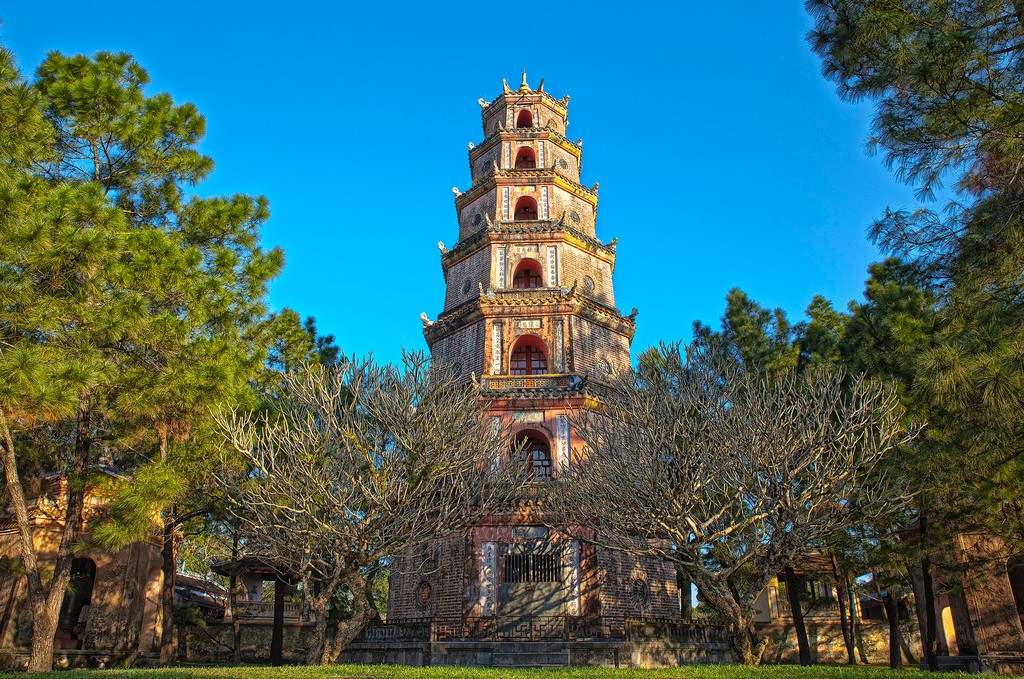

Overlooking Hue River, Thien Mu is the oldest temple in Hue. After many ups and downs, the temple has been restored and reconstructed several times through the ages. Apart from special architectural structures such as Phuoc Duyen Tower, Dai Hung Shrine, Dia Tang Shrines, and Quan Am Shrine with its steles and copper bells, Thien Mu temple is home to many precious antiques. Visitors may admire the statues of Buddha and the temple’s history carved into horizontal lacquered boards. When visiting Hue, visitors often spend time here worshiping and seeking tranquilly while contemplating the Perfume River.
Further information
- Position: The temple is located on Ha Khe hill, 5km west of the city center. From the Royal Citadel, pass Le Duan – Kim Long crossroad, and go straight to Kim Long – Nguyen Phuc Nguyen Street.
- Free entrance.
Hue garden houses
Known as the city of gardens, Hue contains hundreds of famous garden houses. They are designed in antique style with intricately carved frames and roofs decorated with embrossed dragons and cloud details. You should spend at least a day to visit the Hue garden houses and listen to their owners talk about the history and cultural features of the houses.
Further information
The most famous garden houses include Ngoc Son Princess (31 Nguyen Chi Thanh), An Hien (28 Phuc Nguyen, 200m away from Thien Mu Temple), Y Thao, and Tinh Gia Vien.
The rustic Thanh Toanvillage
We also suggest checking out a house displaying farming tools near the Thanh Toan tile-roofed bridge in Thanh Toan village. Just 8km from Hue, you can learn more about the history of the bridge. A nearby farmhouse contains artifacts such as paddle-boats, buckets, sieves, jars, rice mortars, and flat baskets reflecting the daily life of the ancient people of Hue. Exciting activities such as paddle-boats, milling, making conical hats, and more will also be waiting for you.
Further information
- Activities: Cycling to discover the daily life of locals is the most exciting activity. You can book a cycling tour with Hue Land Tour (2 Hung Vuong, Hue – Tel: 054 629 2811). Price: VND550,000/ guest. Website: www.huelandtour.com
- During Hue Festival 2016, Thanh Toan village will hold a market reenactment of the Hue village markets in old times with traditional activities and folk games.
Pristine and tranquil nature
Hai Van Pass – Lang Co Beach – Bach Ma National Park
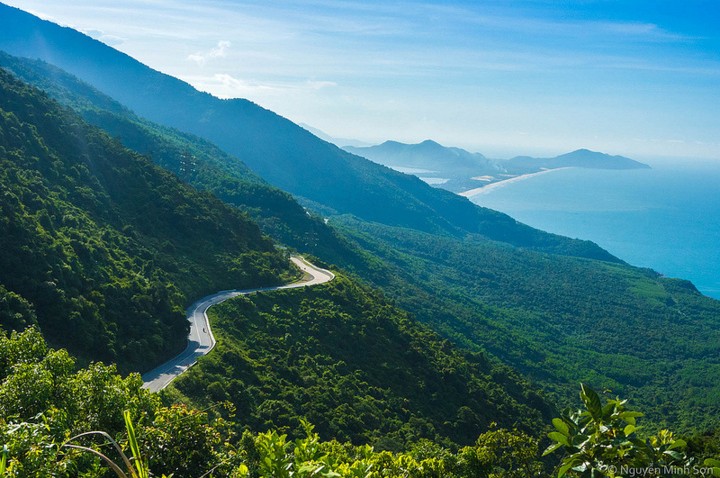
Lang Co Bay, with the lagoon and mountains on one side and long beach on the other, is a perfect place for you to have a picnic or soak in the clear blue water. From Lang Co, you can ride a motorbike over the Hai Van Pass to explore “the most marvelous wonder”.
Bach Ma National Park is another highly recommended place. The park is home to about 2,147 species of flora among which are numerous rare species such as Dacrydium elatum and Aquilaria malaccensis. You can ride a motorbike into the heart of the forest and then walk to the main attractions such as Ngu Ho, Do Quyen waterfalls, Bach Ma peak, and Vong Hai Dai.

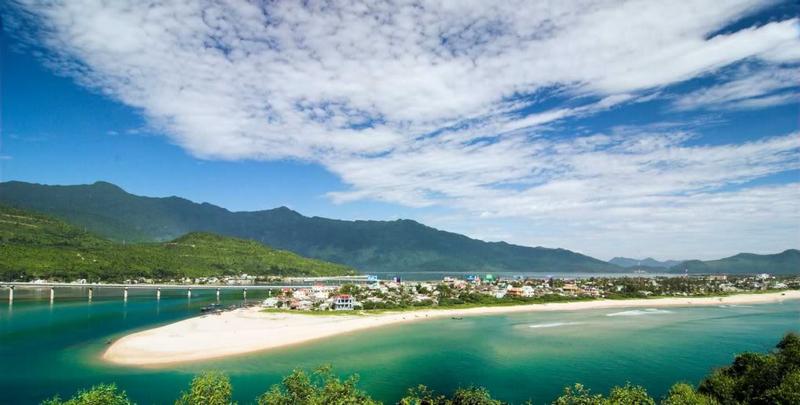
Further information
- Position: Lang Co Bay is on the foot of the Hai Van Pass, 70km away from Hue. Bach Ma National Park is around 30km away from Lang Co.
- Transportation: You can travel by bus from Hue to Da Nang and stop at Lang Co. If you travel by motorbike, you can follow Highway 1A or 49B along Thuan An beach, Tam Giang Lagoon before going over the Phu Gia Pass.
- Accommodation: you can stay at Banyan Tree Lang Co Resort (www.banyantree.com) and Angsana Hotel (www.angsana.com). You can check rates & availability for this hotel on Agoda.com or Booking.com.
“I’m so impressed by the local customs of Hue. They are far different from others. In Hue, there is an important connection between the spiritual features of palaces and tombs and daily life. Particularly, you will find the life of most people here tightly associate with the rivers and lagoons.” ~ Photographer Le The Thang
Tam Giang Lagoon
As a part of the Tam Giang – Cau Hai Lagoon system, Tam Giang possesses a pristine beauty that gives every visitor a feeling of tranquility. Don’t miss the two best times to contemplate the lagoon: during sunrise and sunset. You can also visit Dam Chuon (Cau Hai lagoon) – the largest part of the system. Tiny boats with light nets and fishermen’s homes adorn the banks of the river. Sit on a boat, go around the lagoon, visit some sentry-boxes, and taste the grilled seafood while immersing yourself in the simple life of the locals here.
Further information
- Position: Dam Chuon (Chuon Lagoon), Phu Vang is 10km south of Hue. Follow Highway 49 to An Thuyen and pass Tu Hien Bridge.
- Cuisine: You should try banh khoai (plain rice flan), banh tet (rice cake filled with green bean paste and fat pork), banh canh (rice spaghetti), banh nam, banh bot loc, banh beo (floating fern-shaped cake), and bun bo Hue (Hue vermicelli with beef) at local restaurants. The seafood is delicious and half the price as in other places.
Highlights
Listen to the traditional music of Hue and release flower garlands into the Perfume River
Your trip could not be complete without listening to the classicalmusic of Hue. Instrumentalists wear traditional costumes (ao the and khan xep) and play period instruments including the dan nhi (Vietnamese two-chord fiddle), and the dan nguyet (Vietnamese two-chord guitar) while singers wear the traditional ao dai and play the song loan (two-carrier palanquin) and senh tien (castanets with stringed coins).
When the city is lighted up, what could be better than sitting on a boat while sipping a glass of wine on your way from from Thien Mu temple past the royal citadel to Vi Da village? You can also release some flower garlands and floating lanterns into the water with the beautiful backdrop of the traditional music.
Further information
- There are about 500 musicians and artists allowed to perform traditional music in Hue.
- For listening Hue music on the Perfume River, tickets start at VND100,000/guest. There are 2 performances each night: 19:30-20:30 and 20:30-22:00.
- You can also enjoy Hue traditional music at 19:30 every Tuesday and Friday at the Hue Museum.
The Zipline & Highwire challenges
The Zipline
At 560m, this Zipline broke Vietnam’s Record for the longest free hanging uninterrupted Zipline in the country. Attach yourself to the cable and imagine that you have wings to fly over the forest from Ma Yen Mountain down to a picturesque lake. The game will help to deal with your fear of heights and enhance the feeling of hovering above forests and sliding fast as the beautiful scenery rushes behind you.
The Highwire
Highwire is a game requiring players to concentrate to conquer their fear of heights and keep their balance. After being equipped with all the necessary protective equipment and safety cables, you begin by stepping out onto the wooden planks while swinging on a rope. The difficulty increases as you go further, crossing over a net bridge, then jumping from block to block before waking across a tight rope bridge. Anyone above 1.1 meters, including children, can take part in this game.
Further information
- Safety: you must wear safety harness, including: a lanyard, carabiner, and safety ropes as well as follow all safety instructions.
- Zipline and Highwire are available at Alba Thanh Tan Resort, Phong Son, Phong Dien, Hue. Tel: 054 355 3225. Website: www.albavietnam.com
- Tickets: Zipline: VND96,000/guest/turn. Highwire discovery: VND120,000/guest/turn and Highwire adventure: VND210,000/guest/turn.
Hue cuisine
Hue is renowned not only for its brand of sophisticate royal dishes but also its flavorsome street food.
Royal cuisine
It is no exaggeration to say that Hue’s royal cuisine has reached the level of high art. The dishes originally meant for kings and royalty are prepared according to strict rules and rituals at every stage, from cooking to the way in which it’s served. The dishes are served in wooden gold trimmed, red lacquer boxes.
The culinary expert, Ho Thi Hoang Anh, a descendant of Ho Van Ta – the last royal chef of the Nguyen Dynasty – explains that “there were at least 50 people worked together to prepare a meal for the King. The team had to follow strict rules and rituals to insure that all dishes were safe. They even had to work with royal doctors to make sure that nutritious ingredients were chosen that did not class with eachother. ”
Further information
You can try royal cuisine at Y Thao Restaurant (3 Thach Hanm Thuan Hoa) or Tinh Gia Vien Restaurant (7/28 Le Thanh Ton, Hue)
Simple street food
Delicious street food can be found easily at every corner in Hue. Travellive would like to suggest a few must-try dishes.
Com hen (rice with mussels)
Com hen is a simple mixed dish. The dish combines different ingredients: cold rice, fresh veggies, aromatic herbs, sour star fruit, pungent shrimp paste, warm mussels, hot chili, crispy deep fried pork’s skin, roasted peanuts, and white sesame, all served with a bowl of clear mussel soup. The cool rice is still soft and glutinous, while the other ingredients are cool except for the mussel soup. Mix everything together and enjoy with chili sauce.
Further information
You can try com hen at restaurants on Truong Dinh Street or Cung An Dinh. Prices start at VND10,000/bowl.
Che Hue (sweet soup)
There are 36 types of Hue royal sweet soup, each with its own distinct flavor. They were considered indispensable desserts for king in the Nguyen Dynasty. Nowadays, sweet soup is a popular street food and can be found on every corner. The folk sweet soup of today originated from the royal ones except that some of the stages of preparation have been skipped. You can try an array of sweet soup made from corn, green beans, red beans, Indian taro, and more.
Further information
You can taste sweet soup at stalls along Tran Phu, Phan Boi Chau, Truong Dinh Street, or visit Che Hem restaurant on Hung Vuong Street (near the crossroad Hung Vuong – Nguyen Tri Phuong). Prices from VND7,000/bowl.
Hue cakes
After long hours of walking around Hue Citadel, you can relax and enjoy Hue cakes at many restaurants. The full menu of cakes with banh beo (bloating fern-shaped cake), banh uot (streamed thin rice pancake), banh khoai (plain rice cake), banh it (glutinous rice cake), banh bot loc with different fillings such as green bean, coconut, prawn, or pork making for an unforgettable dining experience.
Further information
Recommended address: Ba Do restaurant (7-8 Nguyen Binh Khiem, Phu Cat, Hue). Price: banh beo: VND50,000/plate, banh Nam VND40,000/plate, banh loc VND40,000/plate, and banh khoai VND25,000.
“I have lived in Vietnam for 4 years and I have spent some months in Hue. I love the tombs of emperors, cycling along the roads and stopping at restaurants to try Bun bo Hue (Hue vermicelli with beef).” ~ Joshua Zukas, freelancer writer
Tours and Excitement
Discover the craft villages’ traditional identity
Visitors to Hue not only want to explore the architectural and world heritage sites but also immerse themselves in the daily lives of locals to learn more about artisanal culture. In Tay Ho village, you can witness the process of making non (conical hats) from sticking the latania leaves into the frames to weaving the Perfume River, Ngu Mountain, Trang Tien Bridge or Thien Mu temple on top, distinguishing Hue conical hats from others. If you go to Phuoc Tich ceramic village, you can visit the artists’ workshops to buy souvenirs and watch ceramics be fired in the kilns. In Thanh Tien village, you can try your hand at making paper flowers.
Further information
- Position: Phuoc Tich is located near the O Lau river, 1km from Highway 1A, in the Phong Hoa neighborhood, Huong Dien District. Tay Ho village is near the Nhu Y river, Phu Ho, Phu Vang, just 12km away from Hue City. Thanh Tien village is in Phu Mau neighborhood, Phu Vang, 7km from Hue.
- Transportation: You can go around villages by motorbike. Rental bikes cost about VND120,000/day.
Travel by pedicab and taste food at night
After a day of sightseeing, you can relax and taste some signature food while joining a pedicab night tour. You will be taken around beauty from what you experience during the dayFrom the royal citadel, go to Truong Tien Bridge and try whatever cakes and sweet soup you miss during the day.
Further information
You should ask the pedicab drivers about a sightseeing and streetfood tour or ask your hotel to help you. Thang Long City Tour: VND420,000/guest. For details, please visit www.thanglongcitytour.com
Learn how to cook Hue Cuisine
If enjoying Hue cuisine satisfies your stomach, then learn more by joining a cooking class. You will have a chance to be a master chef and make your own Hue style dishes. Visit Dong Ba market, buy ingredients and learn how to make some dishes such as Hue rolls, banh beo, banh khoai, and bun bo Hue. Let’s see how excited you are when tasting your food!
Further information
You can book a cooking education tour at Hue Land Tour, 31 Vo Thi Sau, Hue. Website: www.huelandtour.com. Prices start at VND400,000/guest. Hue Inn Side Out: No.16, 572 Bui Thi Xuan, Thuy Bieu, Hue. Website: www.hueinnsideout.com. Price start at VND550,000/guest.
Shopping at Dong Ba Market
Don’t miss the opportunity to go shopping at Dong Ba market where you can find lots of traditional products such as conical hats, artisanal goods, and famous fish sauces like tuna sauce, pompano sauce, herring sauce, anchovies sauce, mackerel sauce, scallops sauce, etc., or simply enjoy the specialties of Hue.
Further information
- Position: Chuong Duong, Phu Hoa, Hue
- Note: When buying goods at the market, you should bargain for half or one third of the prices given by sellers.
Useful information
Climate
The rainy season with heavy monsoons lasts from September to December in Hue. Summer lasts from June to August is too sunny and hot. Therefore, the best time to visit Hue is during April when it’s dry with light sun. You should prepare suitable outfits, sunscreen and enough water.
Itinerary
- Airline: You can fly from Hanoi to Hue with Vietnam Airlines, or from HCMC to Hue with Vietnam Airlines, Vietjet Air, or Jestar Pacific.
- Train: Many trains on the Hanoi – HCMC route stop at Hue station. You should choose a fast train: SE1, SE3, SE7 or one of the trains departing in late afternoon or evening so that you can arrive in Hue the next morning. If you travel from HCMC to Hanoi, you can choose the SE2, SE4 or SE8, all of which stop in Hue.
- Passenger car: From Hanoi, you can take a passenger car with Camel, Thesinh Tourist, or Thanh Hung brand. From HCMC, you can contact Phi Long or Thuan Thanh bus companies. These passenger cars depart at Mien Dong Station.
- Transportation: You can travel around the city by taxi, motorbike or pedicab. A motorbike costs VND120,000/day.
Accommodation
In the city
- La Residence Hotel & Spa (5 Le Loi, Hue). You can check rates & availability for this hotel on Agoda.com or Booking.com.
- Century Riverside Hotel (49 Le Loi, Hue). You can check rates & availability for this hotel on Agoda.com or Booking.com.
- Saigon Morin Hotel (30 Le Loi, Hue). You can check rates & availability for this hotel on Agoda.com or Booking.com.
- Imperial Hotel Hue (8 Hung Vuong, Hue). You can check rates & availability for this hotel on Agoda.com or Booking.com.
- Indochine Palace Hotel (105 Hung Vuong, Hue). You can check rates & availability for this hotel on Agoda.com or Booking.com.
- Pilgrimage Village Boutique Resort & Spa (130 Minh Mang, Hue). You can check rates & availability for this hotel on Agoda.com or Booking.com.
Near lagoons and beaches
- Ana Mandara Hue Resort & Spa (Thuan An Beach, Thuan An Town, Phu Vang). You can check rates & availability for this hotel on Agoda.com or Booking.com.
- Vedana Lagoon Resort and Spa (Tam Giang lagoon, Area 1, Phu Loc Town, Phu Loc Dist.). You can check rates & availability for this hotel on Agoda.com or Booking.com.
- Banyan Tree Lang Co Resort (Lang Co Beach, Loc Vinh, Phu Loc Dist.). You can check rates & availability for this hotel on Agoda.com or Booking.com.
Food and drink
Must-try dishes include vermicelli with beef with pig’s feet, vermicelli with grilled pork, grilled pork with banh uot, and nem lui (grilled chopped pork). When wandering around the city in the evening, you can stop at a café and hang out with friends. Recommended cafés: Vi Da Xua (Nguyen Sinh Cung) – one of the most beautiful café in Hue that famous for royal tea, Café He (27 Le Ngo Cat, Hue) designed as a small war museum with ammunition and weapons on display.
Souvenir
Sour prawn and sesame candy as well as handicraft, lacquer, silk, and embroidery items
Read more Hue travel guide at here.
































![10 best airports in Asia in 2016 [RANKED] kuala-lumpur-international-airport-best airports in asia in 2016 by skytrax ratings](https://livingnomads.com/wp-content/uploads/2016/08/29/kuala-lumpur-international-airport-best-airports-in-asia-in-2016-by-skytrax-ratings-218x150.jpg)








